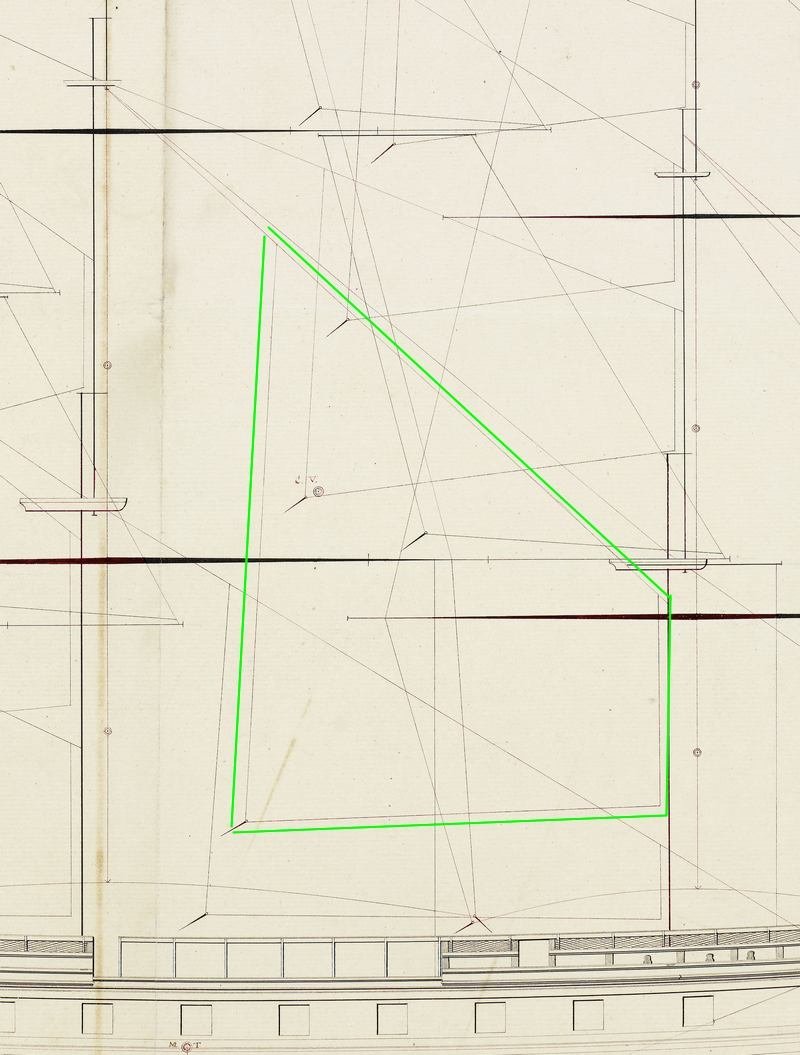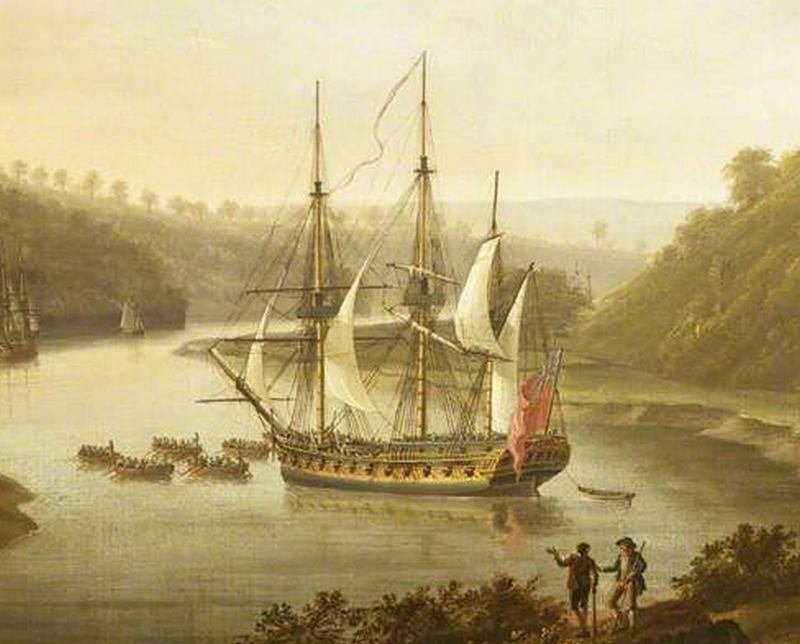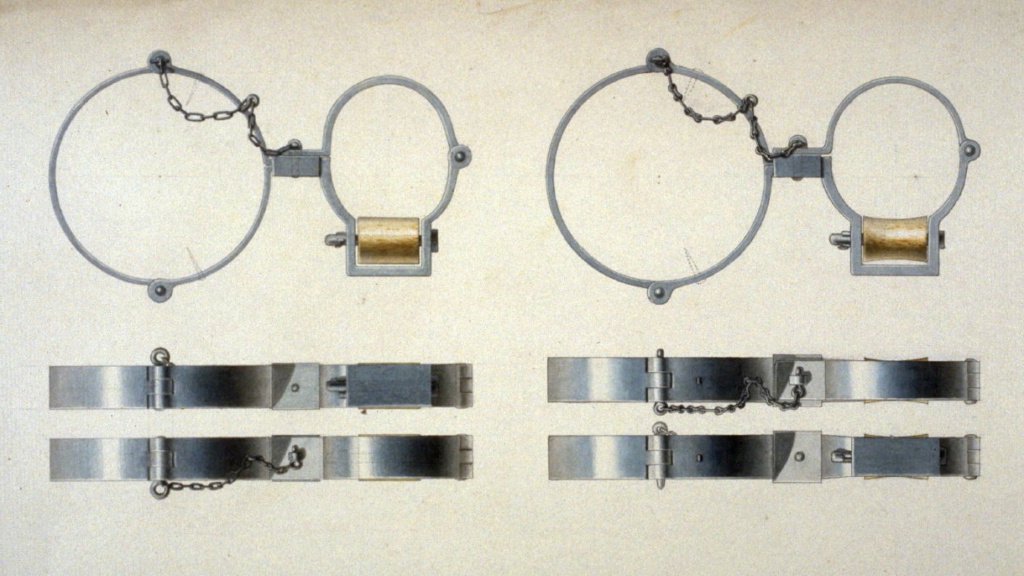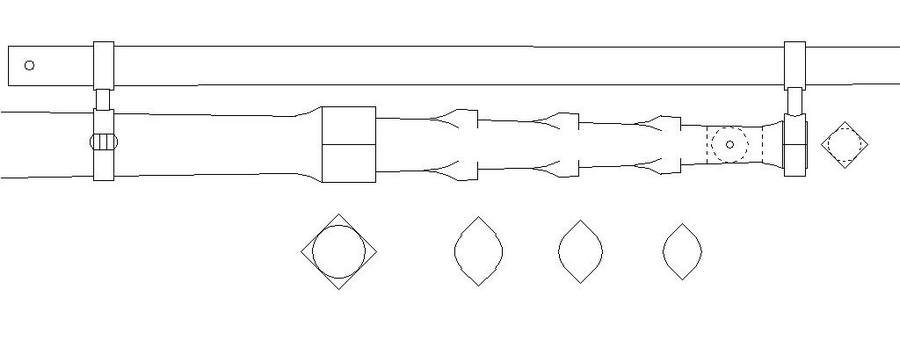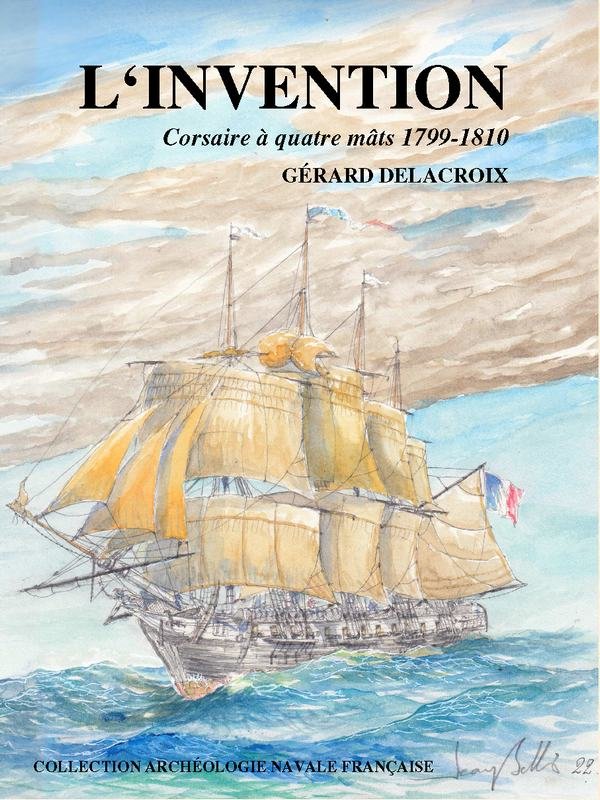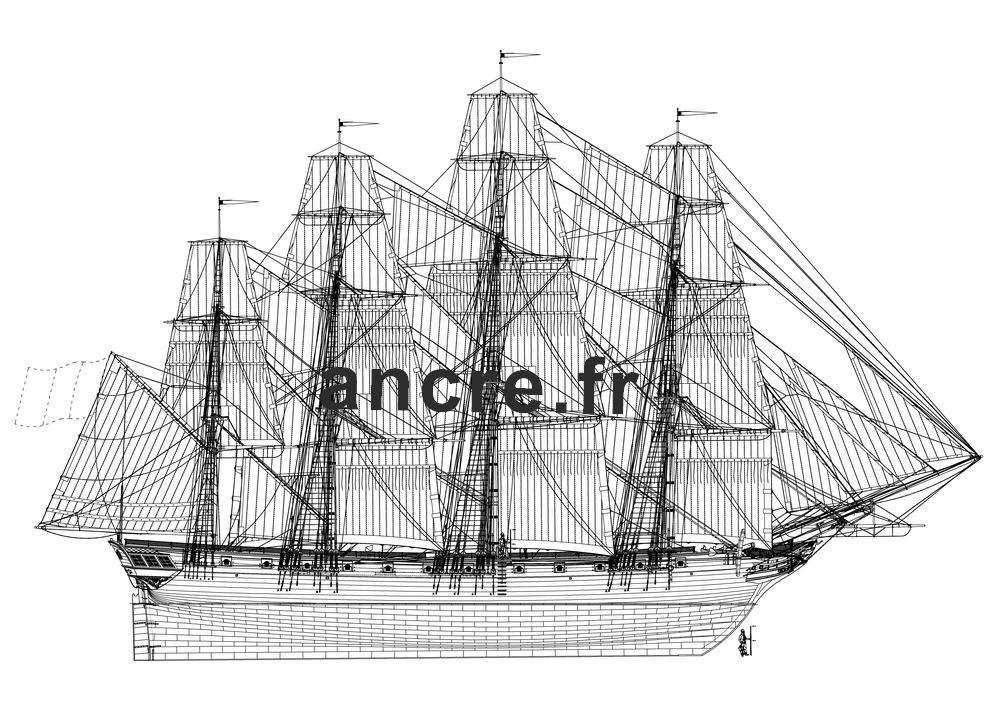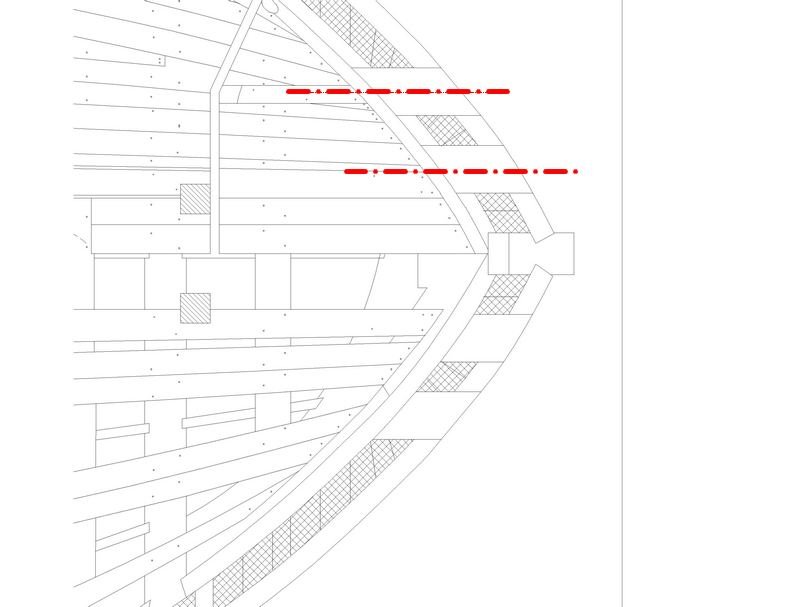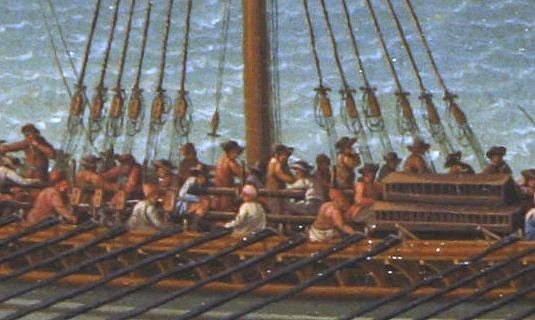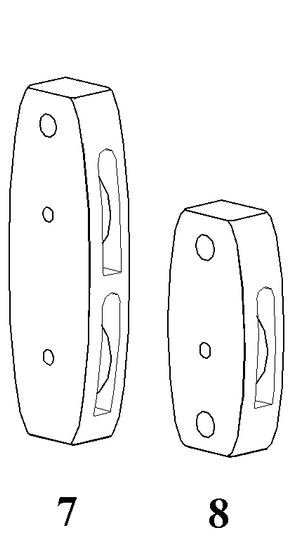-
Posts
169 -
Joined
-
Last visited
Content Type
Profiles
Forums
Gallery
Events
Everything posted by G. Delacroix
-
Hello The false keel is used to preserve the keel and to prevent a little the leeway (the drift). On French ships, it is generally only 4 to 5 inches (French) thick, or approximately 11/14 cm. This value does not affect the draft value significantly. On the other hand, its protective role is very important. However, you should know that not all ships have a false keel. In the report published at the end of the monograph, there is no mention of gripe, it does not exist in the French navy. The text cites an iron stirrup intended to prevent the rudder from being engaged by an anchor cable. We can also observe this stirrup on the plans of the monograph. GD
-
Hello, The monograph of "L'Invention" has only been published for 6 months, there is still no model to my knowledge. The prototype models which are detailed in photos in my monographs are of course finished after publication. But, for "L'Invention" and "L'Egyptienne", there is no prototype model. The model by Greg will therefore be the first whose construction will be published. For "L'Egyptienne", there are several models under construction by members of my forum, including this one made with great talent: https://5500.forumactif.org/t3726-l-egyptienne-au-1-48-mes-debuts-en-arsenal GD
-
I'm even certain of it, the basic thread of the ropes, that is to say the rope yarn, is soaked in hot vegetable tar before being worked into larger diameters. This is the basis of tarred ropes. I only indicated that the standing rigging was tarred occasionally, never the running rigging. This is the reason for its lighter shade in addition to wear. The color is a rather dark reddish-brown without being black. In the 1850s, lampblack was added to make vegetable tar darker. It is in these years that we will begin to use mineral tar, coal tar and later petroleum tar. The strops are part of the standing rigging, they had to be tarred from time to time.
-
Hello, I just want to specify that all the ropes are tarred, I mean all of them. Running rigging becomes slightly lighter as it is maneuvered, wears down, and especially as it passes through the pulleys. The standing rigging remains dark especially as it is re-tarred from time to time without any wear. GD
-
Hello, Very good choice, I can't wait to discover this yard that is, for the moment, unpublished. All my encouragement goes with you GD
-
Hello, Congratulations on obtaining these awards, they demonstrate the quality of your model's execution as well as the application and value of your work. For your next model, I take the liberty of recommending L'Invention, which will be much simpler than L'Egyptienne. This beautiful frigate is truly a big ship with all the complexity of the work of carpentry, artillery and decoration that this implies. The Invention is structurally simpler without being easy but, to my taste, it has the advantage of novelty both in the world of model making and in the innovations it brings for the time of its construction. Moreover, it is an opening towards the clippers which will succeed it fifty years later. Whatever you decide, I have no doubt that your project will succeed. And thank you for the citation and the compliments. GD
-

La Palme by Tobias - 1:36 - POF
G. Delacroix replied to Tobias's topic in - Build logs for subjects built 1501 - 1750
Hello, In English "canal des anguillers" can be translated by: limber-holes. GD -
Your example shows a triangular shape that indeed existed. For the period concerned (end of the 18th century), the size of the sail surprisingly increased until arriving at that which is illustrated in the drawing just above.. Towards the first third of the 19th century, it will return to a more reasonable size. Here is an extract of the sail plan of a corvette, we can see the large surface of this sail. GD
-
This is the main topmast staysail, quite common at the end of the 18th century. More visible here: GD
-
Hello, Concerning the height of Le Mercure deck under the forecastle, I checked in the monograph and, measured on the plan, it is 5 feet 1 inches (0.325 m French feet) from plank to plank. This gives a height of 1.68 m. In his "Traité de Construction" dated circa 1730, the period that interests us, Blaise Ollivier gives, for merchant ships, a height of "4 feet to 4 feet 10 inches / 5 feet above the deck" (still French feet). And this height is also present in the description of small frigates. Jean Boudriot therefore applied the current practices at that time to make his drawings. Often, information from the past surprises us and we tend to think of an error. By cross-checking the data, we realize that this is not the case and above all that our mind is not adapted to the criteria of the time. I think you have been badly advised because there is documentation on the frigates of the time much more suitable than Le Mercure for your reconstitution. Sorry Johannes for this drift of the subject. GD
-
Hello, "Trust but verify"... First, verify your own knowledge in this field, where your culture is obviously very superficial and does not allow you to judge objectively the work of Jean Boudriot, who is otherwise recognized as one of the great, if not the greatest, specialist in French naval archaeology. Using the construction plans of a merchant ship to deduce those of a 40-gun frigate is a very hazardous venture whose credibility can be seriously questioned. But everyone has the right to be wrong. GD
-
Hello, I am pleased to announce you the publication of my twelfth monograph which is about a four-masted privateer ship: "L'Invention". Built in Bordeaux in 1799/1800, she is of an innovative design for the time with her pioneering hull design with very tapered lines and her unique four-masted rigging. These major innovations were far ahead of the clippers that would follow her a few decades later. It presents the characteristics of ships specifically built to be armed as privateers. Booklet 23x31cm, 130 pages and 34 large format plans. Available in English translated by Anthony Klouda, Editions ANCRE. Gérard Delacroix
-

French 64 Gun Ship 1729 by Jeronimo
G. Delacroix replied to Jeronimo's topic in - Build logs for subjects built 1501 - 1750
-
Hello Waldemar I stopped the elaboration of the monograph of La Néréïde because of the lack of the vertical section plan. I had adapted the sections of a similar ship, Le Jazon, and I had drawn all the frames and a little more. The idea that these were not the sections of La Néréïde bothered me a little and affected the rigor with which I work. On the other hand, monographs of this type of vessel are always somewhat identical. This is why I worked on Le Rochefort or the harbor dredger, which are more original and renew the subject a little. I put this project on hold while waiting to find sources that would have satisfied me. In the meantime, I worked on other projects that gave me much satisfaction. So there will not be two monographs and I am not collaborating with JCL, we do not have the same conception of this type of work. I would like to take this opportunity to announce a (very) big preview of a new monograph to come, that of a privateer four-masted ship, the first modern four-masted ship of 1799, that is to say, very much ahead of those of the 1850s. Michele, sorry for the drift of the subject. GD
-
Hello, I know "La Néréïde" very well because I had started a monograph on this ship a few years ago. Like all the ships of this period, the bow is wide because it has a reverse side, a feature designed to keep the waves away, to save space on the forecastle and especially to keep the catheads away from the side. It must be said that the plans of this ship do not exist, especially the vertical sections. The only drawings we have are a longitudinal section, another vertical one in the middle and the drawing of the decorations. JC Lemineur had to adapt the vertical sections of another ship to make his plans.
-
Hello, I regret to inform you that the upper blocks are installed upside down. The small part of the block should be down. Moreover these blocks are not exactly good, (see the drawing below) Concerning the rope, the running part is tied to the shroud chains, the surplus of rope is rolled on the upper block (see the illustration below). GD
- 510 replies
-
- reale de france
- corel
-
(and 1 more)
Tagged with:
-

Le Soleil Royal by Nek0 - 1/72 - Marc Yeu
G. Delacroix replied to Nek0's topic in - Build logs for subjects built 1501 - 1750
You should read my message, #177 of this topic.- 205 replies
-
- ship of the line
- soleil royal
-
(and 2 more)
Tagged with:
-

Le Soleil Royal by Nek0 - 1/72 - Marc Yeu
G. Delacroix replied to Nek0's topic in - Build logs for subjects built 1501 - 1750
B. Frolich used the plans from Jean Boudriot's research on the Chevalier de Tourville, he is not a researcher nor a historian but he is a good modeler.- 205 replies
-
- ship of the line
- soleil royal
-
(and 2 more)
Tagged with:
About us
Modelshipworld - Advancing Ship Modeling through Research
SSL Secured
Your security is important for us so this Website is SSL-Secured
NRG Mailing Address
Nautical Research Guild
237 South Lincoln Street
Westmont IL, 60559-1917
Model Ship World ® and the MSW logo are Registered Trademarks, and belong to the Nautical Research Guild (United States Patent and Trademark Office: No. 6,929,264 & No. 6,929,274, registered Dec. 20, 2022)
Helpful Links
About the NRG
If you enjoy building ship models that are historically accurate as well as beautiful, then The Nautical Research Guild (NRG) is just right for you.
The Guild is a non-profit educational organization whose mission is to “Advance Ship Modeling Through Research”. We provide support to our members in their efforts to raise the quality of their model ships.
The Nautical Research Guild has published our world-renowned quarterly magazine, The Nautical Research Journal, since 1955. The pages of the Journal are full of articles by accomplished ship modelers who show you how they create those exquisite details on their models, and by maritime historians who show you the correct details to build. The Journal is available in both print and digital editions. Go to the NRG web site (www.thenrg.org) to download a complimentary digital copy of the Journal. The NRG also publishes plan sets, books and compilations of back issues of the Journal and the former Ships in Scale and Model Ship Builder magazines.




